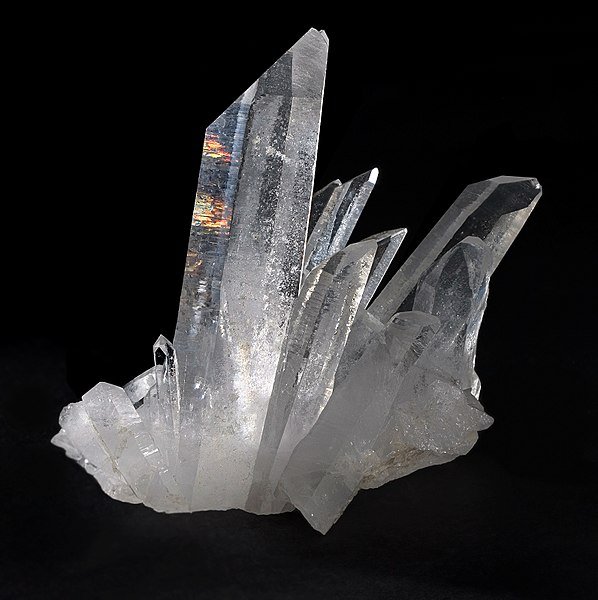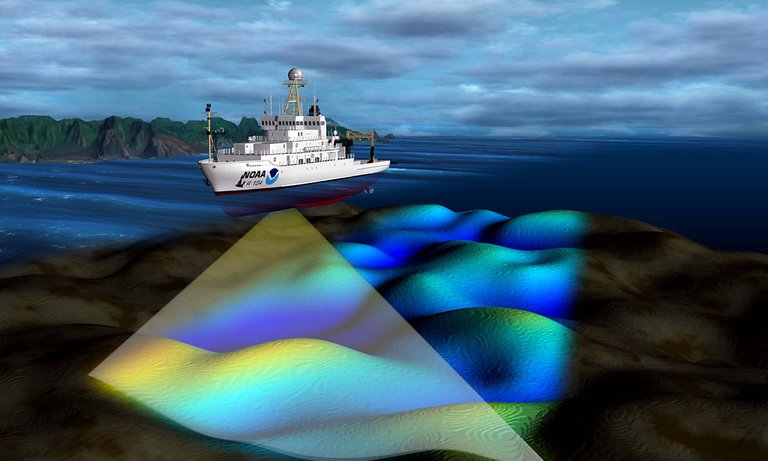Welcome to my blog once again! In the last phenomenon post on earthquake lights the term piezoelectricity came up, but...

(Image source - author, JJ Harrison ([email protected]) - license)
Do you know what it is?
Piezoelectricity refers to the ability of certain solid structures to create voltage when pressure is applied on them. In other words it's electricity generated from pressure or squeezing. I know it gets boring sometimes, but this word also originates from Greek words πιέζειν (pi-e-zin = pressing) and ήλεκτρον (i-lek-tron = amber, the famous fossil that gets electrically charged by rubbing). It's the conversion of mechanical energy to electrical and vice versa.
Starting with the pyroelectric effect (voltage created by temperature change) and their knowledge on crystals, the Curie brothers (Jacques and Paul) presented the idea of piezoelectricity in 1880. One year later, Gabriel Lippman pointed out the converse piezoelectric effect (applying voltage distorts the shape of the solid).
How does it work?
In order to understand it, we need to explain the basic structure of crystals (don't confuse crystals with Swarovski jewellery or decorative lumps of rocks and gemstones). A crystal for chemistry is any solid structure that consists of a unit cell coexisting with other identical cells in a repetitive pattern. The atoms or molecules that work as the building materials are arranged in a very specific way. To put it simply, crystals are clusters of twin mini-structures.

(Perovskite structure of PZT - Image source: commons.wikimedia.org)
Within a unit cell, the compounds (which bear their own electric charge) have very specific places; their position (the distance among the differently charged particles) works to neutralize those charges, leaving us with a neutral mass. Note that the arrangement of the building particles is symmetrical in most crystals (like metals), but not in piezoelectric ones. When the structure undergoes stress, the particles' positions change and so do their distances, meaning that we end up with a unit cell that is positively charged on the one side and negatively charged on the other (as the positive charges are drifted apart from or pulled closer to the negative ones). What do we get after that? A charge differential spreading all over the crystal's body, a voltage that works kind like the poles of a battery, allowing current to go through.
Does it work the other way round?
Of course. When you apply a voltage on a piezoelectric crystal, you make the unit cells to shift their shape because of the "electrical pressure" they get.
Which materials can be piezoelectric?
Piezoelectric materials don't act as electricity conductors unless pressure is applied on them. They are categorized in crystals and ceramics and can be either natural or man-made.
Natural piezoelectric materials: quartz, berlinite (AlPO4), sucrose, rochelle salt, topaz, minerals of the tourmaline group, lead titanate (PbTiO3), wood and silk. We can also find them in our bodies: bones, tendons, tooth enamel, dentin, our DNA and some proteins.
Synthetic piezoelectric crystals: langasite (La3Ga5SiO14), gallium orthophosphate (GaPO4), lithium niobate (LiNbO3), lithium tantalate (LiTaO3). Synthetic piezoelectric ceramics: lead zirconate titanate (Pb[ZrxTi1−x]O3), barium titanate (BaTiO3), potasium niobate (KNbO3), bismuth ferrite (BiFeO3), bismuth titanate (Bi4Ti3O12) and many more.
Applications
Piezoelectricity is widely used. You can find it in lighters, actuators, speakers, microphones and buzzers. Ultrasounds work on that kind of technology and it is also used in sonars (used for the first time during WWI). The converse effect is what keeps quartz clocks working.

(Image source - author, NOAA's National Ocean Service - license)
Sow crystals, reap electricity
A promising project would be to use piezoelectricity to power everyday life activities. Generating electricity through the use of piezoelectric materials on a larger scale would be beneficial for many of us. From shoes that heat up your feet while walking, dancefloor lights that stay on when you dance or cell phones that charge as you move around, energy harvesting is a really interesting concept.
Let's summarize:
- Certain solids can work like batteries; when pressed or squeezed they create a voltage.
- The opposite also works, they change shape when voltage is applied on them.
- Piezoelectric materials can be either natural or man-made.
- Piezoelectricity has various applications and could possibly be a cheap solution to power different activities.
We're closing with these videos with further details and explanation:
References
electronicdesign.com
explainthatstuff.com
wikipedia.org

Thank you for stopping by and giving this post a read. I hope you enjoyed it! If you please, feel free to pay a visit to my blog and check out my short stories along with plenty of educational posts and of course my bizarre natural phenomena series.
Special thanks and mentions go to:

Until my next post,
Steem on and keep smiling, people!

Am always smiling when you connect modern scientific words to ancient Greek terms. Okay, this time I also laughed with the Swarowski story ;)
Hehe! I'll end up like mr Portokalos from the movie "My big greek fat wedding" :P
But it is fascinating how words that have been for centuries are still alive and bear such complex and amazing functions (it kind of makes me secretly proud of speaking that language)
Since I haven't seen the movie, I can't notice that ^^
Unfortunately, I didn't learned ancient Greek at high school (only Latin was offered). Now, thanks to physics, I read Greek without too much problems. Understanding is another story but some words sound familiar to me :D
I thought you might haven't (it's a guy from a silly comedy that links every english word with greek ones).
If you want to begin understanding better, I am always happy to teach you :P
Well, I have unfortunately no time to learn a new language. I should first improve the 4 I know ;)
They are indeed a lot! But whenever you feel like it my offer will still be on :)
Thanks a lot then! :)
Love it!!!Resteemed😊😊😊
Thank you!! :D
Piezoelelectric effects one of the many, many reasons rocks behave the way they do under high pressure.
Yep! That's part of your area of expertise mister geologist! :D
Thank for reading!
Piezoelectricity is definitely amazing! i referenced it in few prior articles of mine.
Great job explaining it !
Yeah, I remember your post ;)
Thanks for reading! :D
Like it
Resteemed and Upvoted by @resteemable

Resteemit.com By-donation Upvote & Resteem Service
Works on Any Steemit Article. Join the Trail
This post has received a 0.66 % upvote from @buildawhale thanks to: @ruth-girl. Send at least 1 SBD to @buildawhale with a post link in the memo field for a portion of the next vote.
To support our daily curation initiative, please vote on my owner, @themarkymark, as a Steem Witness
Great article @ruth-girl
I’ve got two young daughters and love seeing women involved in STEM.keep up the great work!
Thank you very much! I'm glad you like my work :)